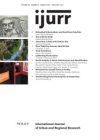In the Toronto Census Metropolitan Area (CMA), almost a third of the total housing stock is comprised of high‐rise apartment buildings. Not only do most new immigrants reside in these structures upon arrival, they often continue living here for a prolonged period, for a variety of interrelated economic and psychological reasons. It is therefore important to ask: How do these vertical structures affect the life worlds of the residents? What functions do these spaces perform? How do immigrants develop attachments to these spaces, and how do they make them their own? By drawing upon the experiences of 30 Bangladeshi immigrant households in Toronto’s inner suburbs, I demonstrate that even though these vertical stacks are not conducive to frequent social interaction by design, the residents variously transform such functional spaces into unique ‘Bengali’ neighbourhoods that are filled with ambivalent feelings of hope and despair, imaginations of the future, becoming a place they can call home away from home.
Details
Written by:
Sutama Ghosh
Digital Object Identifier (DOI)
10.1111/1468-2427.12170
About DOI
Read full article as PDF
Read full article as HTML
See the references for this article
